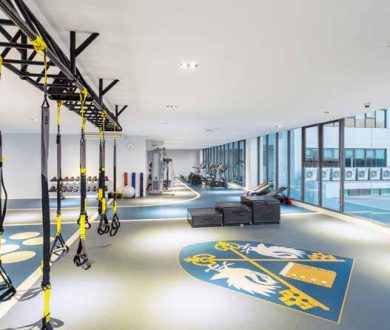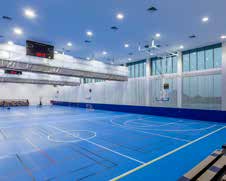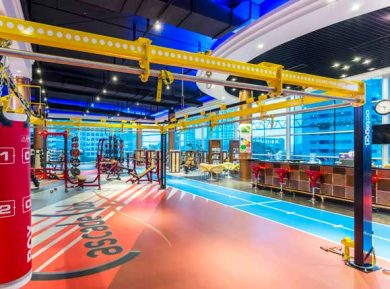
Developing Commercial and Educational Properties with Recreational Amenities
What is amenity oriented development? Applied to real estate, it is any feature, natural or manmade, that adds comfort, convenience, or pleasure to the core project’s chosen market and thus adds value.
Here we are discussing manmade amenities. The word amenities is commonly used in the hospitality industry to describe what others may call facilities. Why are amenities and an “amenity strategy” important in property development Amenities, done right, complement the core project, aid in positioning and differentiating a project, increase the asset value, and add marketing leverage for sales. Key intangible value is that amenities may become a social focal point of the project. The number one reason they are included in the early phasing of a project is to add marketing leverage. User appeal and the need for operational maintenance and programming come later.
When discussing amenities as part of real estate development, on the “macro” side we refer to golf courses (public), golf clubs (private), country clubs (private), sports clubs, marinas, fitness, health, rehabilitation centres, competition sports facilities, hospitality and social amenities. Looking on the “micro” side amenities can include tennis courts, football and futsal pitches, track and athletic facilities, indoor and outdoor multi-purpose sports courts, indoor and outdoor play centres, activity specific fitness facilities, specialty fitness flooring systems, outdoor fitness, jogging andcycling tracks.
Risks
Risks associated with amenity oriented development of course depend on the project’s core concept and whether the core project is commercial, educational or residential. Most significantly is what if the chosen amenity strategy doesn’t work and fails to drive sales thus adding to cost and debt. After opening, a poorly planned and phased amenity package can tie up the early stages of a project with high maintenance and operational cost. Many developers have learned that property development and amenity management are mutually exclusive skill sets.
Conflict
Having an ‘amenity strategy’ means 1) having a clear understanding of the market 2) a recognition of the core project’s lifecycle and 3) a plan for the transfer, operational management, or equity control of the amenities. Particularly when residential real estate is involved conflict may develop between facilities with marketing appeal vs facilities with user appeal.
Additionally, sometimes a developer’s chosen amenity plan, geared for sales, will be expensive to maintain and operate with a disproportionate amount of investment put into facilities with very limited user appeal. Examples abound such as over built clubhouses with limited and out of date health and fitness facilities, sports and playground facilities. One of many examples of divergence between developer and purchaser/end user.
“…an amenity strategy means 1) having a clear understanding of the market
2) a recognition of the core project’s lifecycle and 3) a plan for the transfer,
operational management, or equity control of the amenities.”
Quality
One of the biggest areas of conflict between developers and tenants or end users is the design and quality of the recreational amenities. If the main purpose for including amenities in a development is to leverage sales the end user will come up short if what gets built is a brochure fulfilling, poor quality or over built facility that eventually must be maintained with inadequate end user or tenant paid common area fees.
Key elements to quality are design, material specifications; appropriate long lasting specialty athletic surfacing as specified by the sport’s governing body, and quality operational equipment. Add to this a comfortable social or club environment in place of a merely industrial looking recreational complex. Another way to ensure quality is for developers to not include specialty recreational facilities into the package of their general contractor without nominating a specialty subcontractor to install pre agreed upon standards. Otherwise, this process can end up with a divergence between the interest of the developer and the main contractor when it comes to budgeting and building recreational amenities.
George Foose is Executive Director of Sports Engineering And Recreation Asia Ltd, (Seara) a Bangkok based regional supplier and contractor with nine offices in seven countries in Indochina and East Asia. Seara specialises in the planning, supply, and building of sports, fitness, club, and health facilities in commercial and educational, residential and hospitality projects throughout Thailand and the Indo-China region.
www.searasports.com
[email protected]







